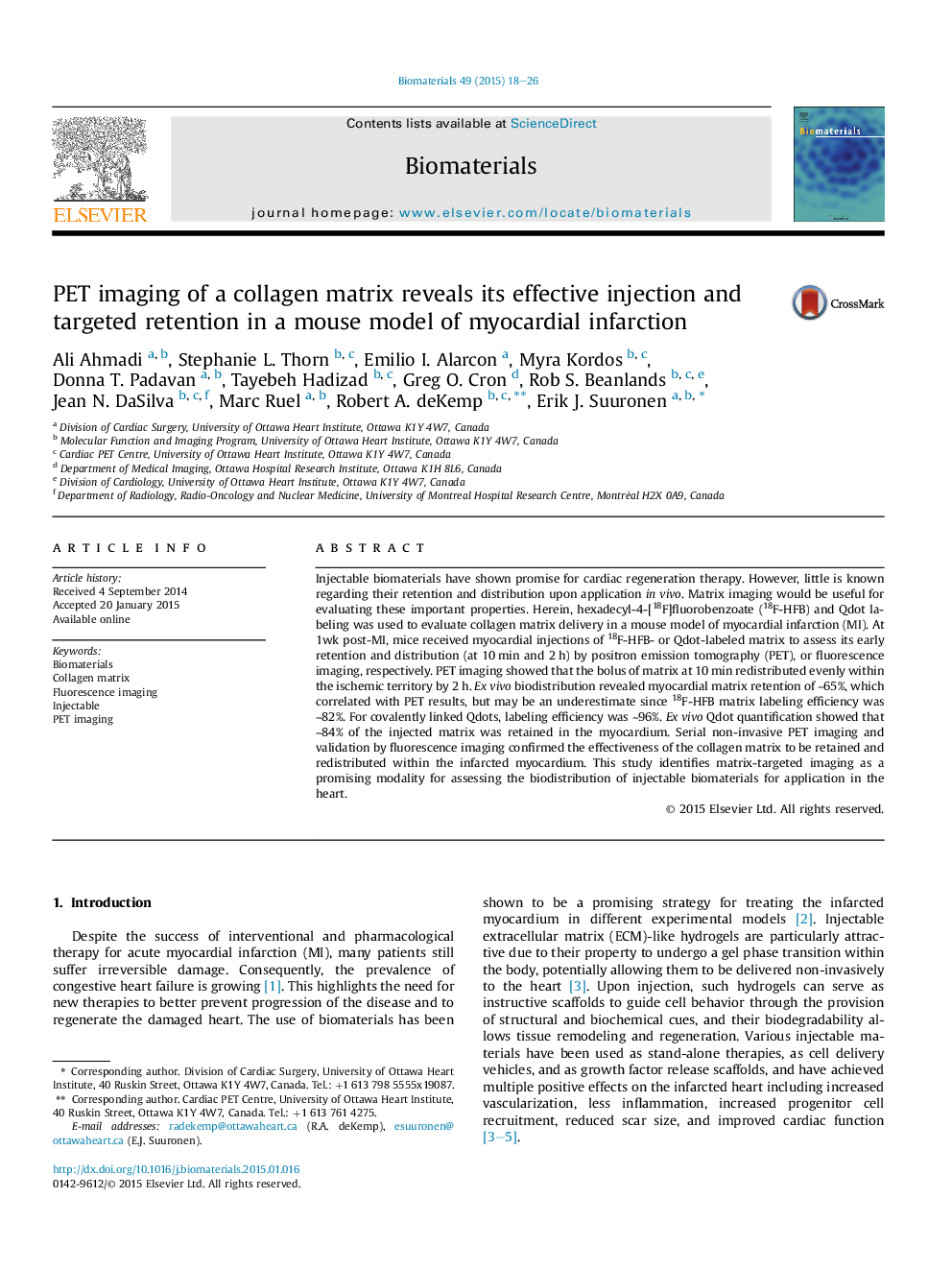| Article ID | Journal | Published Year | Pages | File Type |
|---|---|---|---|---|
| 6486167 | Biomaterials | 2015 | 9 Pages |
Abstract
Injectable biomaterials have shown promise for cardiac regeneration therapy. However, little is known regarding their retention and distribution upon application in vivo. Matrix imaging would be useful for evaluating these important properties. Herein, hexadecyl-4-[18F]fluorobenzoate (18F-HFB) and Qdot labeling was used to evaluate collagen matrix delivery in a mouse model of myocardial infarction (MI). At 1wk post-MI, mice received myocardial injections of 18F-HFB- or Qdot-labeled matrix to assess its early retention and distribution (at 10 min and 2 h) by positron emission tomography (PET), or fluorescence imaging, respectively. PET imaging showed that the bolus of matrix at 10 min redistributed evenly within the ischemic territory by 2 h. Ex vivo biodistribution revealed myocardial matrix retention of â¼65%, which correlated with PET results, but may be an underestimate since 18F-HFB matrix labeling efficiency was â¼82%. For covalently linked Qdots, labeling efficiency was â¼96%. Ex vivo Qdot quantification showed that â¼84% of the injected matrix was retained in the myocardium. Serial non-invasive PET imaging and validation by fluorescence imaging confirmed the effectiveness of the collagen matrix to be retained and redistributed within the infarcted myocardium. This study identifies matrix-targeted imaging as a promising modality for assessing the biodistribution of injectable biomaterials for application in the heart.
Related Topics
Physical Sciences and Engineering
Chemical Engineering
Bioengineering
Authors
Ali Ahmadi, Stephanie L. Thorn, Emilio I. Alarcon, Myra Kordos, Donna T. Padavan, Tayebeh Hadizad, Greg O. Cron, Rob S. Beanlands, Jean N. DaSilva, Marc Ruel, Robert A. deKemp, Erik J. Suuronen,
